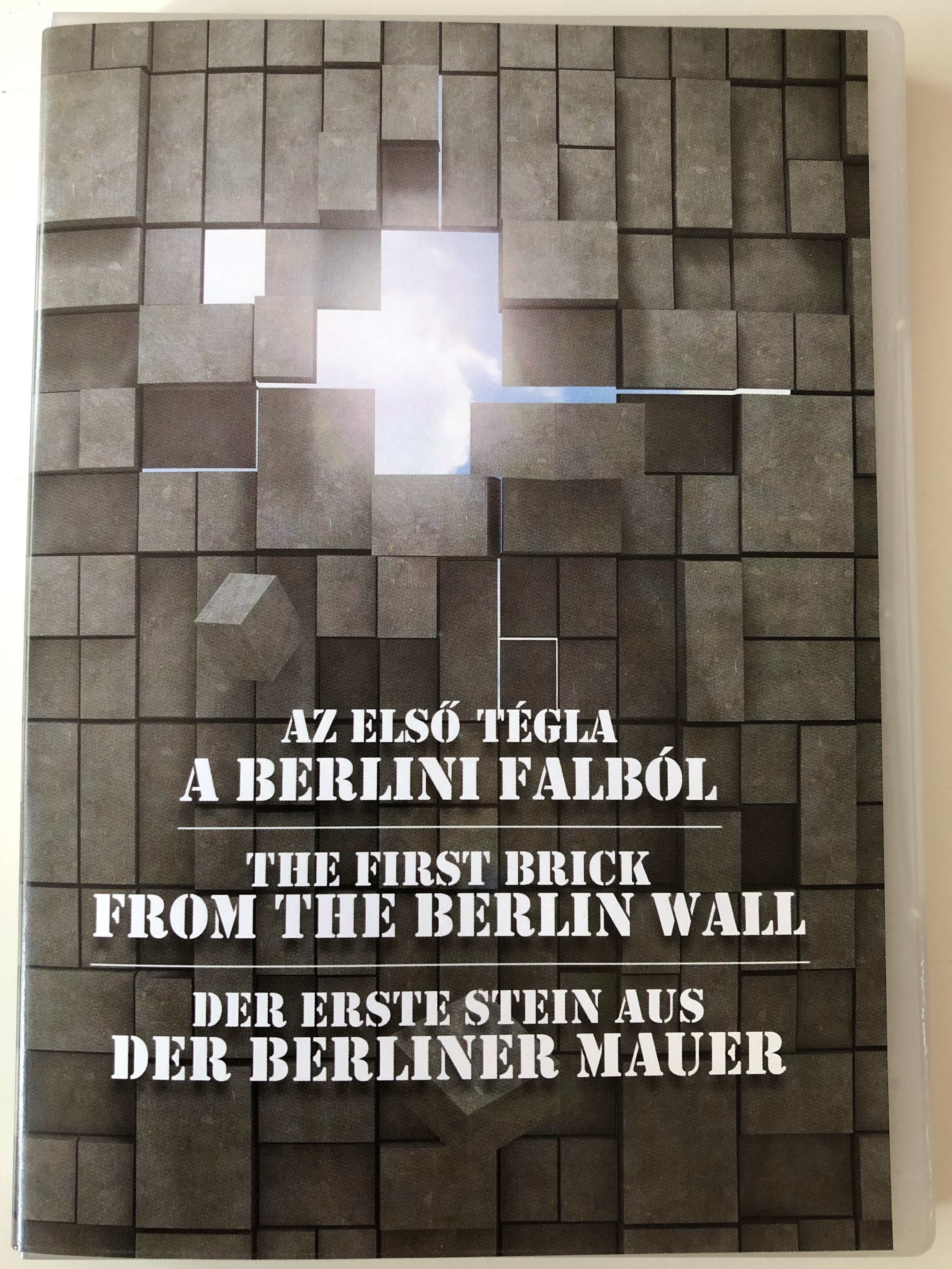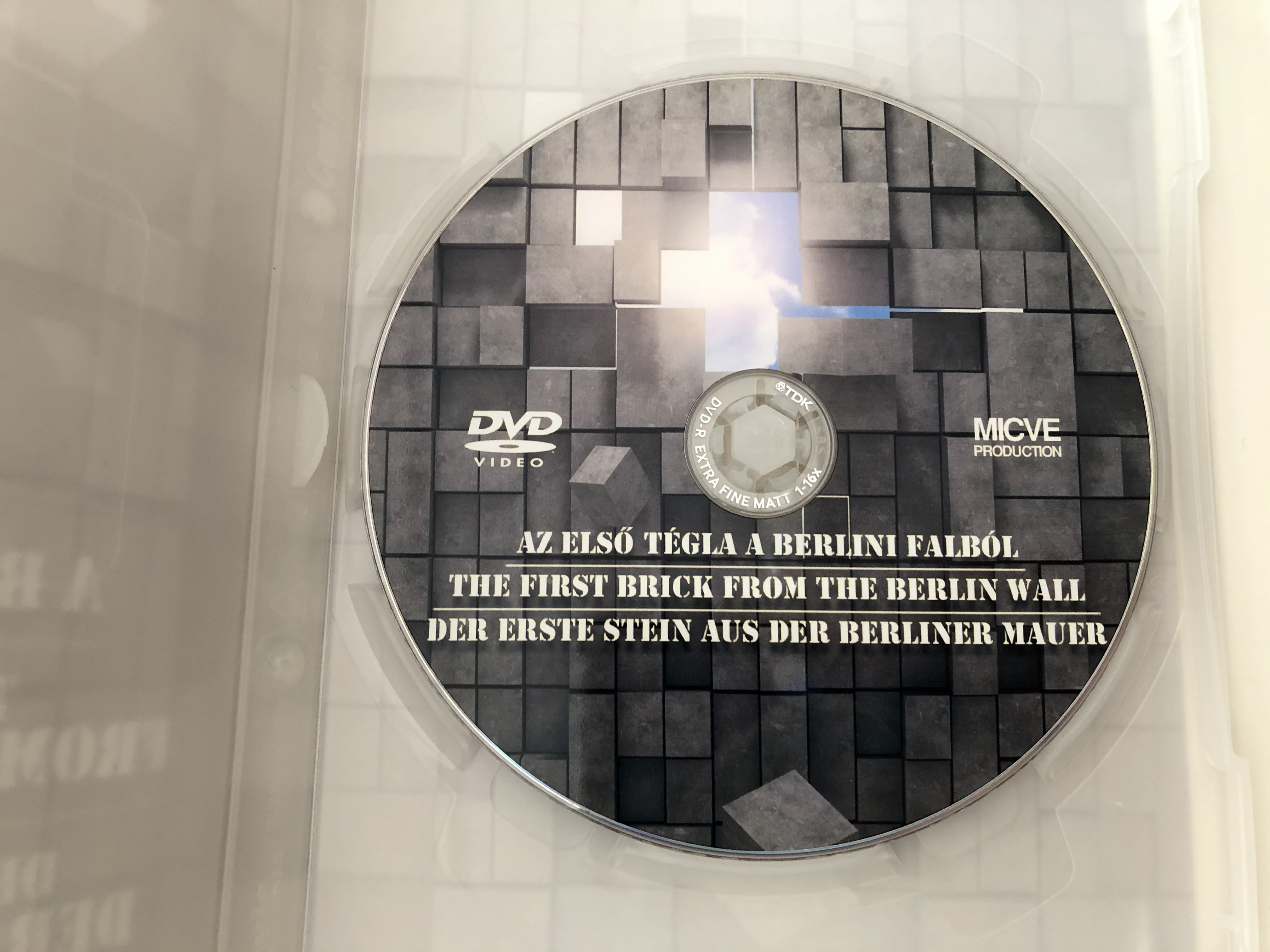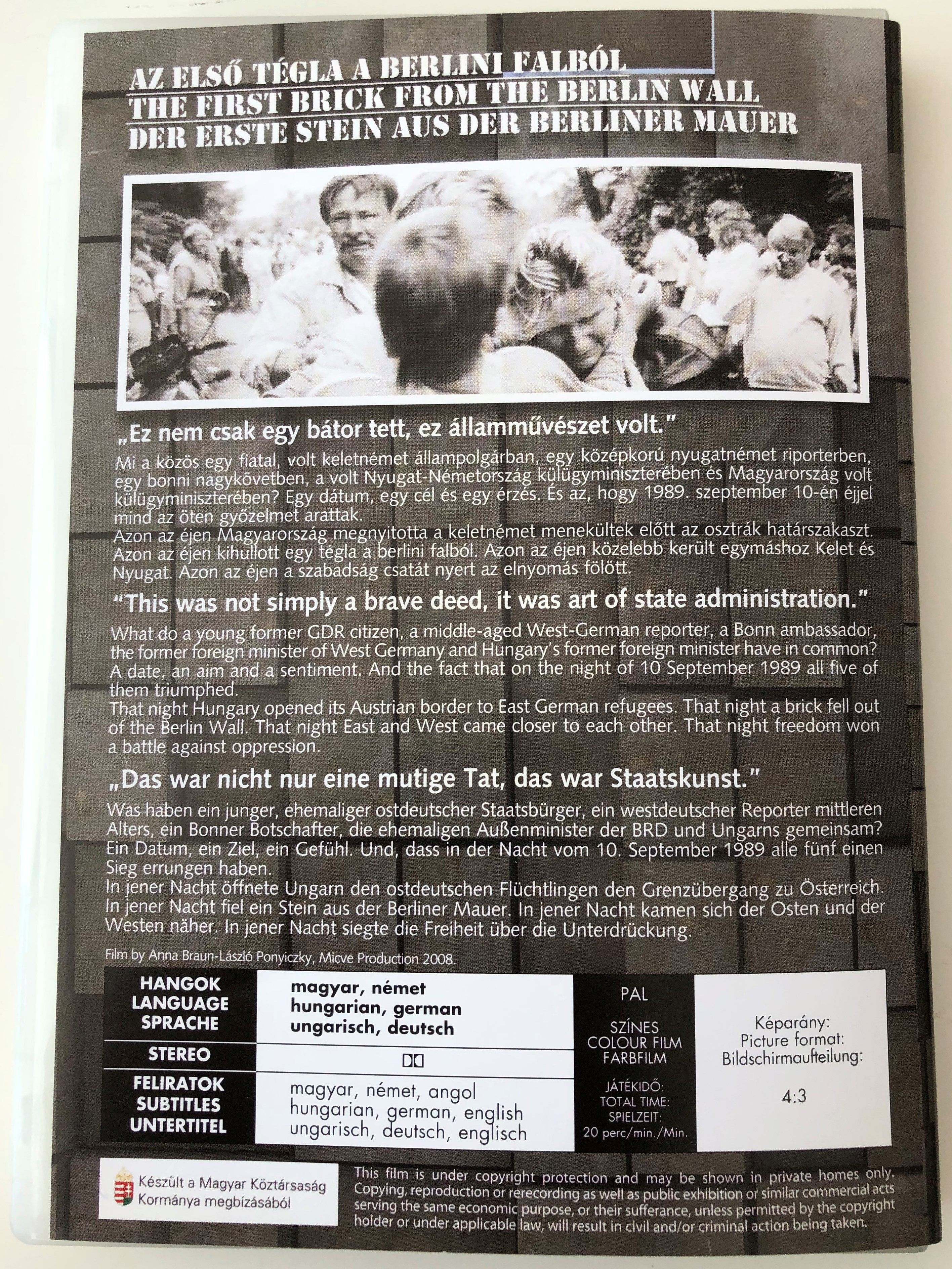Description
The First brick from the Berlin Wall DVD 2008 Az első tégla a Berlini falból / Directed by Anna Braun-László Ponyiczky / Documentary about the fall of Communism in Germany / Der erste stein aus der berliner mauer
UPC 8590548600883
REGION 2 PAL DVD
MADE IN HUNGARY
AUDIO: German 2.0, Hungarian 2.0
SUBTITLES: English, Hungarian, German
Total Runtime: 99 minutes
Hungarian Summary:
„A vasfüggöny szimbolikus és gyakorlati átvágásával egységes, mégis nyitott és szabad Európa bontakozhatott ki a több évtizedes megosztottságból. Mert ezzel aktívan hozzájárultunk nemcsak a német családok újraegyesítéséhez, de Németország és egész Európa újjászületéséhez is." Ezekkel a sorokkal köszönti Gyurcsány Ferenc miniszterelnök Az első tégla a berlini falból című ünnepi kiadvány olvasóit. A kiadványt a magyar kormány jelentette meg az 1989-es osztrák-magyar határnyitás 19. évfordulójára és elektronikusan ingyenesen elérhetően publikálta.
20 évvel ezelőtt, 1989. november 9-én nyíltak meg a berlini átkelők a tömegek előtt, megszűnt a német főváros 28 éven át tartó megosztottsága. A falat 1961-ben építették a keletnémet hatóságok, hogy megakadályozzák az NDK-ban élők Nyugatra menekülését. Az otromba és gyilkos fallal kettészelt Berlin a hidegháborús Európa szimbóluma volt, a fal leomlása, a város egyesítése pedig az európai egyesülés szimbóluma lett. A berlini fal első tégláját azonban nem Berlinben, hanem 1000 km-rel odébb, az osztrák–magyar határ keleti felén ütötték ki. A fal Magyarországon omlott le először: hazánk történelmi döntést hozott a nyugati határnyitással. De hosszú út vezetett idáig.
English Summary:
The fall of the communist government in neighboring Poland's 1989 Polish legislative election in June played a role in the fall of the Berlin Wall. Also in June 1989 the Hungarian government began dismantling the electrified fence along its border with Austria (with Western TV crews present), and then, in September, more than 13,000 East German tourists escaped through Hungary to Austria. This set up a chain of events. The Hungarians prevented many more East Germans from crossing the border and returned them to Budapest. These East Germans flooded the West German embassy and refused to return to East Germany.
The East German government responded by disallowing any further travel to Hungary, but allowed those already there to return to East Germany. This triggered similar events in neighboring Czechoslovakia. This time, however, the East German authorities allowed people to leave, provided that they did so by train through East Germany. This was followed by mass demonstrations within East Germany itself. Despite the policy of state atheism in East Germany, Christian pastor Christian Führer regularly met with his congregation at Leipzig's St. Nicholas Church for prayer since 1982. Over the next seven years, the Church grew, despite authorities barricading the streets leading to it, and after church services, peaceful candlelit marches took place. The secret police issued death threats and even attacked some of the marchers, but the crowd still continued to gather. Protest demonstrations spread throughout East Germany in September 1989. Initially, protesters were mostly people wanting to leave to the West, chanting "Wir wollen raus!" ("We want out!"). Then protestors began to chant "Wir bleiben hier!" ("We are staying here!"). This was the start of what East Germans generally call the "Peaceful Revolution" of late 1989. The protest demonstrations grew considerably by early November. The movement neared its height on 4 November, when half a million people gathered to demand political change, at the Alexanderplatz demonstration, East Berlin's large public square and transportation hub.On 9 October 1989, the police and army units were given permission to use force against those assembled, but this did not deter the church service and march from taking place, which gathered 70,000 people. Many of those people started to cross into West Berlin,[citation needed] without a shot being fired.
German Summary:
Die Berliner Mauer war während der Teilung Deutschlands ein Grenzbefestigungssystem der Deutschen Demokratischen Republik (DDR), das mehr als 28 Jahre, vom 13. August 1961 bis zum 9. November 1989, bestand, und die DDR von West-Berlin hermetisch abriegeln sollte. Sie trennte nicht nur die Verbindungen im Gebiet Groß-Berlins zwischen dem Ostteil („Hauptstadt der DDR“) und dem Westteil der Stadt, sondern umschloss völlig alle drei Sektoren des Westteils und unterbrach damit auch seine Verbindungen zum Berliner Umland, das im DDR-Bezirk Potsdam lag.
Von der Berliner Mauer ist die ehemalige innerdeutsche Grenze zwischen West- (alte Bundesrepublik) und Ostdeutschland (DDR) zu unterscheiden.
Die Berliner Mauer als letzte Aktion der Teilung der durch die Nachkriegsordnung der Alliierten entstandenen Viersektorenstadt Berlin war Bestandteil und zugleich markantes Symbol des Konflikts im Kalten Krieg zwischen den von den Vereinigten Staaten dominierten Westmächten und dem sogenannten Ostblock unter Führung der Sowjetunion. Sie wurde aufgrund eines Beschlusses der politischen Führung der Sowjetunion Anfang August 1961 und einer wenige Tage später ergehenden Weisung der DDR-Regierung errichtet. Die Berliner Mauer ergänzte die 1378 Kilometer lange innerdeutsche Grenze zwischen der DDR und der Bundesrepublik Deutschland, die bereits mehr als neun Jahre vorher „befestigt“ worden war, um den Flüchtlingsstrom zu stoppen.


























